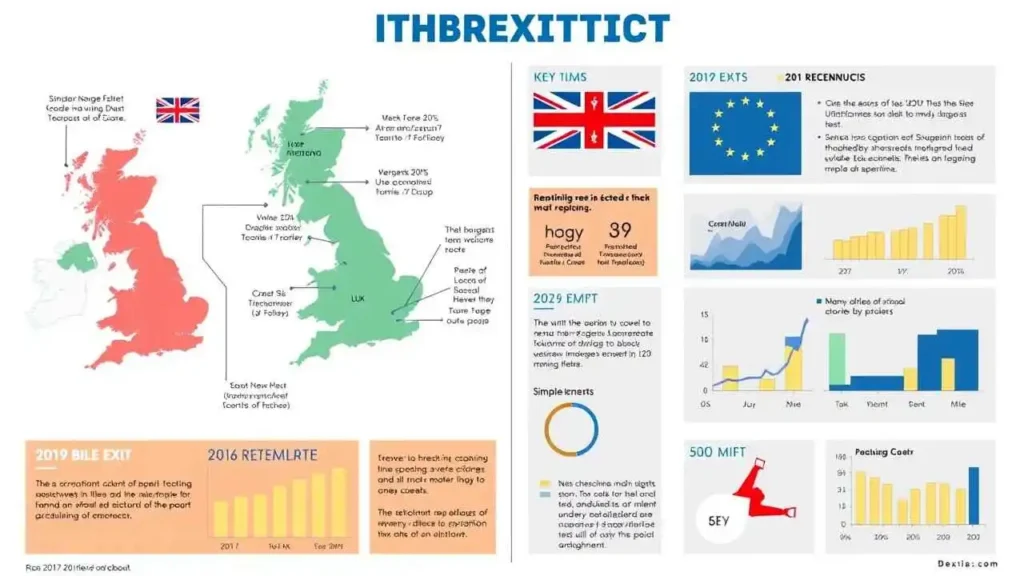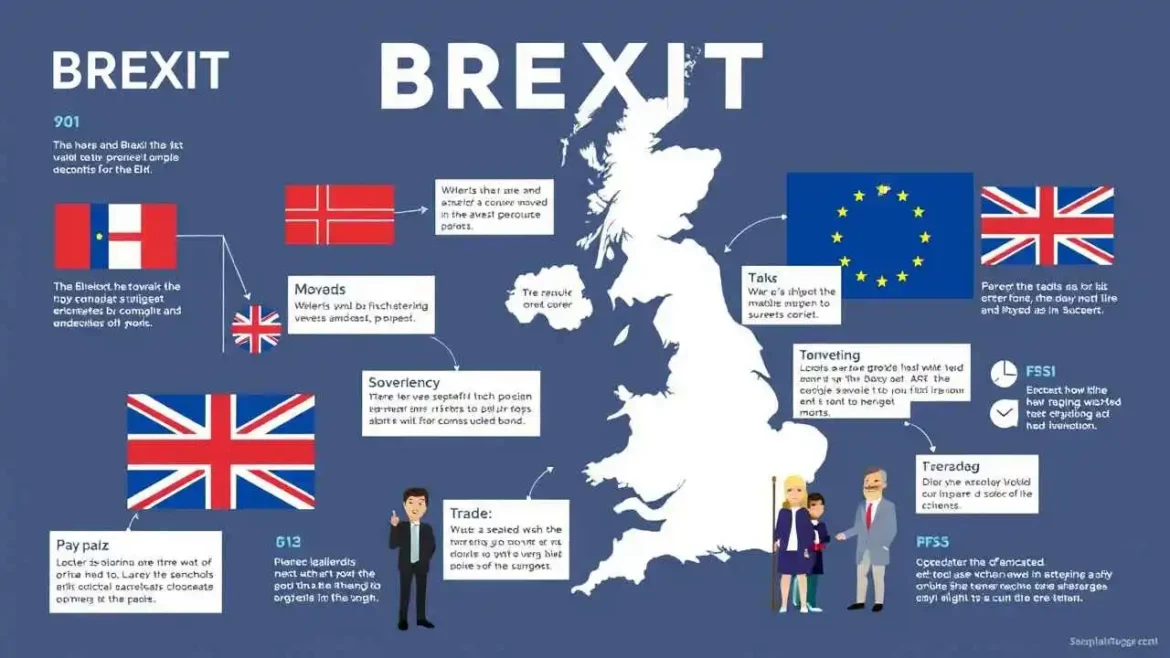
Brexit: The Ultimate Guide to the UK’s Relationship with the EU
For years, the term “Brexit” dominated headlines, sparked heated debates, and ultimately led to a monumental shift in the United Kingdom’s relationship with Europe and the world. But what exactly is or was Brexit? In simple terms, Brexit is the process by which the United Kingdom withdrew from the European Union (EU). It was a complex journey, marked by a historic referendum, challenging negotiations, and significant changes that continue to unfold.
As we look back on this period and the subsequent reality, we can see that Brexit wasn’t just a single event, but rather a multi-stage process initiated by a democratic vote and culminating in the UK’s departure from the EU’s political and economic structures. To truly grasp what Brexit is, we need to understand the context, the motivations, the process, and the outcomes.
The Foundation: The UK and the European Union
Before diving into Brexit, we must first understand what the UK was leaving. The European Union is a unique economic and political union of countries located primarily in Europe. It operates a single market allowing free movement of goods, services, money, and people between member states. It also has its own parliament, commission, and court, and members agree to abide by a common set of laws.
The UK originally joined the European Economic Community (EEC), the precursor to the EU, in 1973. While membership brought economic benefits and facilitated trade, the relationship was often viewed with a degree of skepticism by some within the UK, who harbored concerns about sovereignty, bureaucracy, and the direction of European integration. This underlying tension simmered for decades.
The Path to the Referendum: Why Leave?
The calls for the UK to leave the EU (or its predecessors) were not new, but they gained significant momentum in the years leading up to 2016. Several key arguments were made by proponents of leaving:
- Sovereignty: This was arguably the central argument. Supporters of Leave felt that being a member of the EU meant that UK laws were increasingly being made in Brussels, diminishing the sovereignty of the UK Parliament. They argued that leaving would allow the UK to “take back control” of its laws, borders, and trade policy.
- Immigration: The principle of free movement within the EU allowed citizens of member states to live and work in any other member state. Concerns were raised in the UK about the level and impact of immigration from EU countries, and leaving was seen as a way to gain control over who enters the country.
- Financial Contributions: The UK paid membership fees to the EU budget. Leave campaigners argued that this money could be better spent on domestic priorities like the National Health Service (NHS).
- Trade: While EU membership granted access to the single market, it also meant the UK could not strike its own independent trade deals with countries outside the EU. Leaving was presented as an opportunity to pursue global trade agreements tailored to the UK’s interests.
- Regulation: Some businesses and individuals felt that EU regulations were overly burdensome and hindered economic growth. Leaving was seen as a chance to reduce red tape and create a more competitive environment.
Driven by these arguments and increasing political pressure, Conservative Prime Minister David Cameron promised an “in/out” referendum on the UK’s membership of the EU if his party won the 2015 general election, which they did.
The 2016 Referendum and the Result
The referendum campaign was intense and divisive. The “Remain” campaign highlighted the economic benefits of EU membership, the risks of leaving, and the UK’s influence within the bloc. The “Leave” campaign focused on sovereignty, immigration control, and the potential for a more prosperous future outside the EU.
On 23rd June 2016, the UK voted on the question: “Should the United Kingdom remain a member of the European Union or leave the European Union?”. The result was 51.9% in favour of leaving, with a turnout of 72.2%. The vote revealed deep geographical and demographic splits across the UK.
The result was immediately impactful, leading to the resignation of Prime Minister David Cameron and a period of significant political and economic uncertainty.
Invoking Article 50 and the Negotiation Process
The referendum result was not legally binding on the government, but politically it was seen as a clear instruction from the electorate. The formal process for leaving the EU is set out in Article 50 of the Treaty on European Union. This article provides a two-year timeframe for negotiations once a member state notifies the European Council of its intention to withdraw.
On 29th March 2017, the UK government, under Prime Minister Theresa May, formally triggered Article 50, starting the clock on negotiations.
The negotiations were complex and often contentious, covering a wide range of issues, including:
- Citizens’ Rights: Ensuring the rights of EU citizens living in the UK and UK citizens living in EU countries.
- The Financial Settlement: Agreeing on a figure for the financial commitments the UK had made as a member state (often dubbed the “divorce bill”).
- The Irish Border: Finding a way to maintain a free-flowing border between Northern Ireland (part of the UK) and the Republic of Ireland (an EU member state) while the UK left the EU’s customs union and single market. This proved to be one of the most challenging issues, leading to the controversial “backstop” proposal and later the Northern Ireland Protocol.
- The Future Relationship: Negotiating the terms of trade, security cooperation, and other aspects of the relationship after the UK left.
These negotiations were fraught with domestic political challenges in the UK, leading to multiple parliamentary defeats for Theresa May’s proposed Withdrawal Agreement and ultimately her resignation. Her successor, Boris Johnson, renegotiated parts of the agreement, particularly concerning the Irish border, and secured a parliamentary majority in the December 2019 general election, paving the way for the UK’s formal departure.
Departure and the Transition Period
The United Kingdom formally left the European Union on 31st January 2020.
However, this date didn’t bring immediate, sweeping changes to the day-to-day relationship. A transition period was agreed, which lasted until 31st December 2020. During this period, the UK largely continued to follow EU rules and remained part of the EU’s customs union and single market. This was designed to provide time for both sides to negotiate a future trade and security relationship and for businesses and individuals to adapt.
Negotiations for the future relationship continued throughout the transition period, culminating in the agreement of the EU-UK Trade and Cooperation Agreement on 24th December 2020, just days before the transition period ended.
The Post-Brexit Reality: What Changed?
Since 1st January 2021, the UK’s relationship with the EU has been fundamentally different. While the Trade and Cooperation Agreement avoids tariffs and quotas on most goods traded between the UK and the EU, it did not replicate the seamless access provided by the single market and customs union.
We observe several key changes:
- End of Free Movement: UK citizens now need visas to stay for extended periods or work in most EU countries, and similarly, EU citizens need visas or permits to live and work in the UK.
- New Customs and Regulatory Checks: Businesses trading goods between the UK and the EU now face customs declarations, checks, and regulatory requirements that did not exist before. This has increased costs and complexity for many traders.
- Changes to Services Trade: Access for UK service providers (like financial services, lawyers, etc.) to the EU market is no longer guaranteed and is subject to individual EU member state rules.
- Shift in Legal Authority: The supremacy of EU law in the UK ended. The UK courts are no longer bound by rulings of the European Court of Justice.
- Independent Trade Policy: The UK is now able to negotiate and sign its own trade deals with countries around the world.
- The Northern Ireland Protocol: This specific arrangement keeps Northern Ireland aligned with some EU rules to avoid a hard border on the island of Ireland. However, it has created a new customs border in the Irish Sea for goods moving between Great Britain and Northern Ireland, leading to significant political and practical difficulties.
The impacts of these changes are subjects of ongoing analysis and debate. Economically, there have been reports of reduced trade intensity with the EU, challenges for specific sectors, and impacts on GDP, though isolating the precise effect of Brexit from other global factors like the COVID-19 pandemic and the war in Ukraine is complex.





